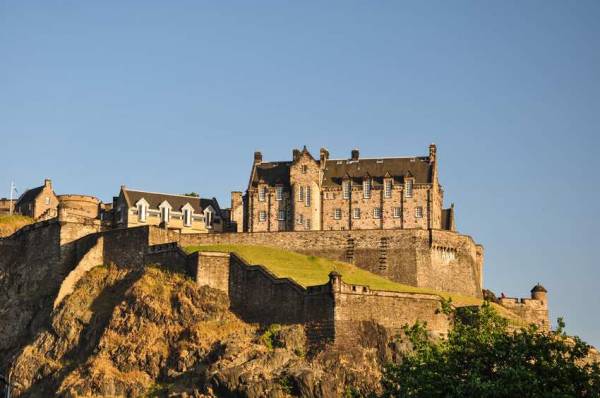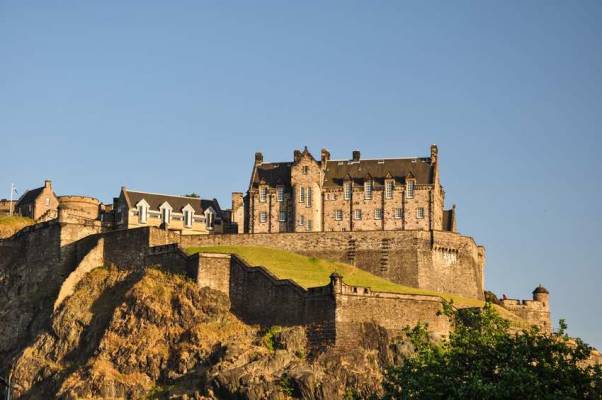
A Brief Guide to Edinburgh Castle

Edinburgh Castle is Scotland’s number one (paid-for) tourist spot and was recently voted as the top UK Heritage Attraction in the British Travel Awards.
From its first days build on a dormant volcano by David I in 1130 to its current status as a world famous hotspot for tourists, Edinburgh Castle has had a rich history. But why should you really make the effort to hike uphill to see this ancient monument? And what can you expect when you get there?
Let’s take a closer look at how Edinburgh Castle packs in more than 800 years of Scottish history and plenty to keep the whole family entertained on a day out.
The Royal Palace
Like many palaces around the world, touring The Royal Palace in Edinburgh allows you to follow in the footsteps of kings and queens from centuries gone by. Within the walls of this stunning work of architecture, many important decisions were made and countless key events took place that shaped the course of Scottish history.
It was here that Mary Queen of Scots have birth to her son James VI in 1566 and where her mother Mary of Guise died six years earlier in 1560.
The Stone of Destiny
The Stone of Destiny may sound like something from the set of Game of Thrones to today’s visitors, but at one time this artifact was considered to be the Scottish monarchy’s most powerful symbol. Used as part of the coronation ceremonies for kings and queens, the Stone of Destiny today sits in the castle’s Crown Room.
Legend has it that this ancient artifact was used as a pillow by the Patriarch Jacob when he dreamt of Jacob’s Ladder. It was also believed to have been brought first to Ireland, then Argyll in Scotland by Fergus the Great, son of Erc, the first King of the Scots who was later crowned with it.
The stone’s more recent history is no less intriguing. Originally taken to England by Edward I in 1296, it was stolen from Westminster Abbey in London on Christmas Day 1950 only to appear 500 miles away outside Arbroath Abbey. In 1996 it was returned to Scotland for good and was placed in the Crown Room where it still lies today.
The Prisons of War Exhibition
The Prisons of War Exhibition gives an insight into the vast array of prisoners who were held in Edinburgh Castle in centuries gone by. Learn about the French, American and Spanish prisoners amongst many other nationalities and find out more about individual stories, such as the five-year-old drummer boy who was arrested during the Battle of Trafalgar in 1805.
The Great Hall
A triumph of Medieval architecture and design, The Great Hall that lies at the heart of the castle is steeped in history. Built in 1511 for King James IV, the hall is truly worthy of a monarch. The stunning wooden roof is a feat of architecture in itself with huge beams perched on stones that are engraved with Scottish symbols like the thistle
Today the Great Hall is a well-stocked armoury with suits of armour, swords and other weaponry adorning the walls – perhaps not dissimilar to how it would have looked when Oliver Cromwell took it over in the 17th century and used the Great Hall as an army barracks.
St. Margaret’s Chapel
St. Margaret’s Chapel is the oldest remaining part of Edinburgh Castle. Built in around 1130m, the chapel was dedicated to Queen Margaret by her son David I. St Margaret was a member of the English royal family who fled the Norman invasion and was canonised by Pope Innocent IV in 1250.
This beautiful place of prayer was used up until the 16th century when it became a humble gunpowder store. It wasn’t until 1845 that the chapel was restored to its former glory and purpose.
Would you love to have Edinburgh Castle on your doorstep? Ready to make the move to the heart of the Scottish capital? Find out more about Edinburgh’s most desirable new district by exploring Quartermile today.


